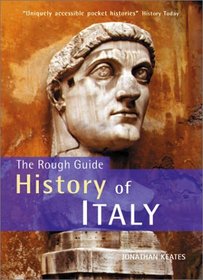Search -
The Rough Guide History of Italy
The Rough Guide History of Italy
Author:
INTRODUCTION Italy has always been an object of desire. Its history, from the outset, was influenced by its geographical position, that of a fertile peninsula in the central Mediterranean, with an abundance of good natural harbours along its coastline and an imposing northern frontier formed by the Alps. Deeply rooted ideas of it as a place of ... more »
Author:
INTRODUCTION Italy has always been an object of desire. Its history, from the outset, was influenced by its geographical position, that of a fertile peninsula in the central Mediterranean, with an abundance of good natural harbours along its coastline and an imposing northern frontier formed by the Alps. Deeply rooted ideas of it as a place of ... more »
ISBN-13: 9781858288369
ISBN-10: 1858288363
Publication Date: 6/23/2003
Pages: 366
Rating: ?
ISBN-10: 1858288363
Publication Date: 6/23/2003
Pages: 366
Rating: ?
0 stars, based on 0 rating
Genres:




